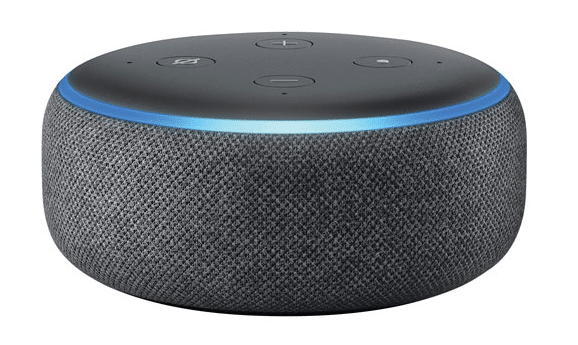This is the ultimate guide to artificial intelligence. It is the starting line for anybody who wants to understand:
- What is AI?
- How does AI work?
- What are some practical uses and examples of AI?
- When was AI invented?
Find New AI is a top resource for the practical use of artificial intelligence. We showcase services, products, and examples that use AI to make your life easier.
If you have anything to add to our list, make sure you comment down at the bottom and let us know.
What is Artificial Intelligence?
At a basic level, artificial intelligence is the usage of computers and technology to perform functions that humans were traditionally required to perform. Artificial intelligence applications can allow you to complete more work by allowing computers to provide you with answers and information and freeing up your time for other things.
Four common human intelligence tasks that AI can handle are:
- Decision Making
- Visual Perception
- Speech Recognition
- Language Translation
With the rise of cheap and fast computing power and the rise of easy-to-use AI frameworks, artificial intelligence is important for individuals and businesses. They allow you to make smart decisions and get more things done in less time.
Below, we show you some of the most popular use cases for AI today. First, lets take a look at machine learning, which is a concept related to artificial intelligence that you should know about.
Machine Learning

Machine learning (ML) is the development of computer systems that are able to learn, adapt, and improve without following explicit instructions. Machine learning is often combined with artificial intelligence to continually improve applications and make AI smarter.
The line between AI and ML is often blurred. AI use cases are often created first and then machine learning is added on top of them for continuous improvement.
One of the most exciting applications for machine learning is self-driving cars. Tesla has added auto-pilot systems to their vehicles that use AI to identify objects and understand the movement of vehicles around you. They use GPS and live weather and traffic data to automatically adjust your car to the road conditions.
They also have machine learning built in that understands the route you want to drive and adapts based on changing conditions, other smart vehicles, and huge amounts of data that Tesla keeps track of.
In the future, machine learning and artificial intelligence will become blurred and merge together to disrupt some of the world’s biggest industries.
Smart Machines
Smart machines is another area that is closely related to artificial intelligence and machine learning. Smart machines are dedicated products that are designed to work on tasks without any human intervention.
Some common examples of smart machines are:
- Robots
- Self-driving cards
- Smart home products
AI software applications can be developed with only some coding knowledge and dominate the area of AI. However, smart machines are some of the biggest disrupters to society because they replace traditional non-smart devices.
How Does AI Work?
Artificial intelligence works by mimicking human decision making in order to give answers or provide value.
Let’s think about a customer service chat system. Before AI, a person would sit at their computer and wait for real life customer questions to come in. Routinely, 90% of customers requests involve the same 5 things:
- Pre-ordering question
- Shipping and handling logistics
- Returning an item
- Orders status updates
- Finding the latest promotional code to use during checkout
The website worker sits for 8 hours each day and answers these questions the same way all day long. This is not a rewarding way to use someone. With artificial intelligence, business chatbots are very popular now. They can provide natural language responses to the questions above, directing customers in very specific ways:
- Providing links to size charts and product information
- Posting shipping prices and time estimates based on a user’s location
- Automatically creating a return shipping label and sending it to the user’s email
- Sending tracking numbers and information about shipments
- Sending the latest valid promo code
Now the worker who had to be dedicated to answering chat requests from customers can be redeployed to a marketing or sales position or other area of the company.
Artificial intelligence works in a similar way in nearly every application. By knowing the most common ways a human needs to interact with something, you can develop automated responses and information to help them out.
Practical Uses of Artificial Intelligence
AI has many practical uses. A large number of online services that use AI to make decisions have popped up in the last few years. At Find New AI, one of our main goals is to sort through these products and services and show you the best uses of artificial intelligence on the internet.
There are also many hardware AI uses as well. Smart machines and sensors in your home use AI to make decisions and drive actions.
Below are some of the most common uses of AI today. Some of them you might not even realize are AI!
Top 10 AI Products and Services
There are hundreds of products and services that have integrated AI into them. Here are some of the most common categories in this space:

- Voice assistants such as Siri in the new iPhone or HomePad or Alexa in the Echo or Echo Dot
- SEO tools that help you rank higher in Google such as Canirank or Alli AI
- Business chatbots such as Botsup or ShoutOUT
- Marketing tools that convert more visitors into paying customers such as Octane AI and Pixamatic
- Image editors that remove backgrounds like Clipping Magic or BgEraser
- Data extractors that automatically grab data and email addresses from any website like APIfy and Hunter.io
- Logo design for new businesses, products and services like Looka and Design Hill
- Text translation services to video and other languages such as Fluently and Sonix.
- Machine learning model training such as Tensorflow and Lobe
- Team, collaboration, and remote-working business tools such as Wrike (agile teams software), X.ai (smart meetings scheduler), and Bit.ai (document collaboration)
We invite you to check out our home page, where we go in depth in all of these different categories and how they can help you work faster individually or as part of a team!
History of AI
The subject of smart computing and decision-based critical thinking has been published in books as far back as 1949. In 1952, Arthur Samuel created a self-learning program that could learn how to play Checkers. This is the first practical usage of AI, though it wasn’t created specifically with this term in mind.
When Was AI Invented?

The term artificial intelligence was officially coined in 1956 by John McCarthy, who led the “Dartmouth Summer Research Project on Artificial Intelligence.” It was a theory on AI as a language and offered some thoughts on how to implement it for practical and modern use. In 1958, McCarthy developed an AI computing language called Lisp. Lisp could perform basic computing functions and predict outcomes as a high level.
Modern AI
Modern AI started to be noticed on a wider scale in 1997, when IBM’s Deep Blue computer beat Gary Kasparov in a game of Chess. Deep Blue was a computer which became the basis for IBM Watson, one of the world’s most powerful super computers used for artificial intelligence and machine learning.
The release of the iPhone in 2007 and Google’s speech recognition app in 2008 accelerated AI for consumer and personal use. Many of the applications before this point were for business and commercial uses. The smart phone placed a supercomputer in the pocket of nearly every consumer in the world.
Since then, AI has expanded into thousands of software applications and hardware. Online productivity services that allow you to automate many tasks that used to be manual are very popular for AI use. Smart home devices use AI to track and predict your habits to increase your quality of life.
AI Pros and Cons
Developing successful AI projects has become easier and easier over the last few years. Below are some pros and cons of using an AI application verses a traditional tool.
Pros
- Artificial intelligence can make decisions faster
- AI can make more decisions in a less amount of time
- There are no emotional or gut-feeling decisions
- AI tools can analyze data and trends 24/7 and automatically notify you of changes
- The more you use an AI, the better it becomes
Cons
- AI logic is only as good as the person who creates it
- AI software and services need to be constantly updated
- You have to setup your platform correctly
- Software can be over-simplified compared to tools that provide data and let you interpret it
From chat bots to marketing tools to photo editing, these AI pros and cons apply to all industries.
Hopefully this guide helps you understand what artificial intelligence is. What is your favorite application of AI? Comment down below so that we can feature it on our website.

